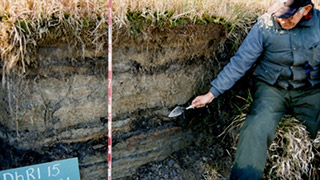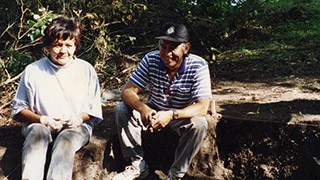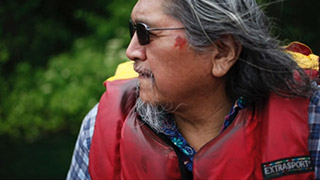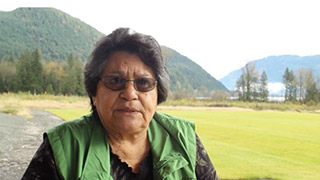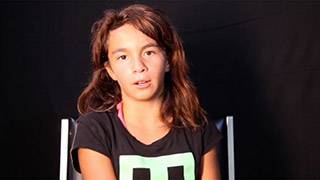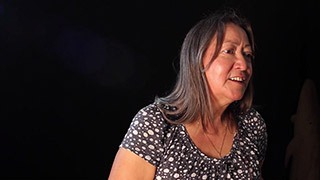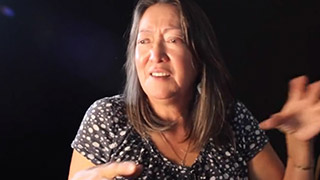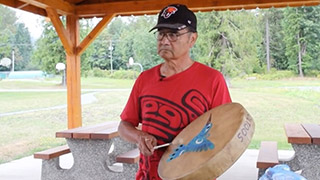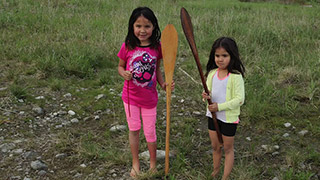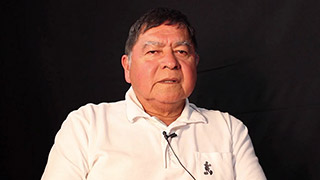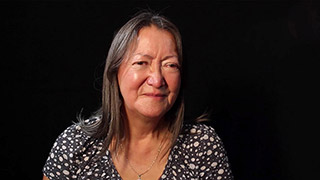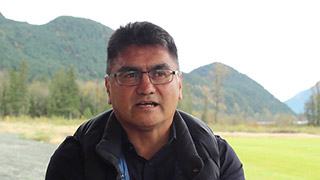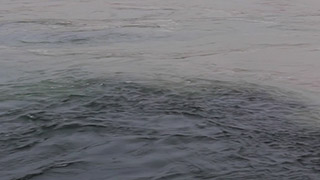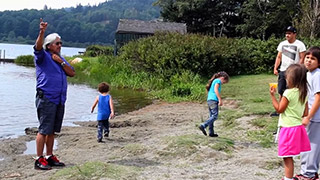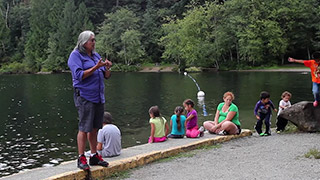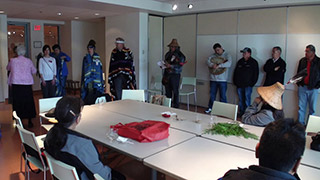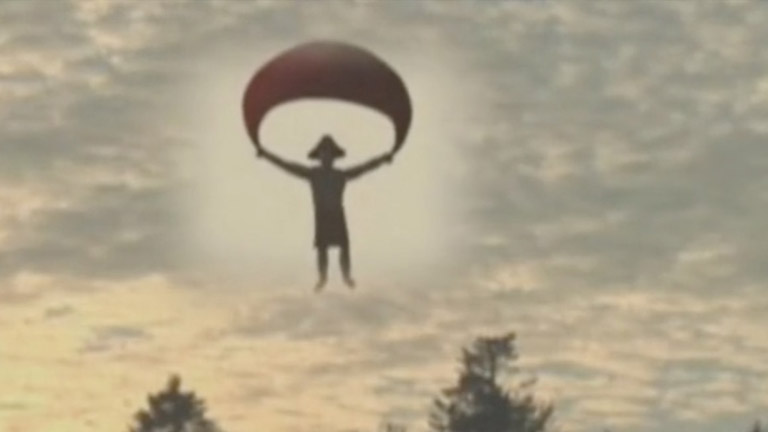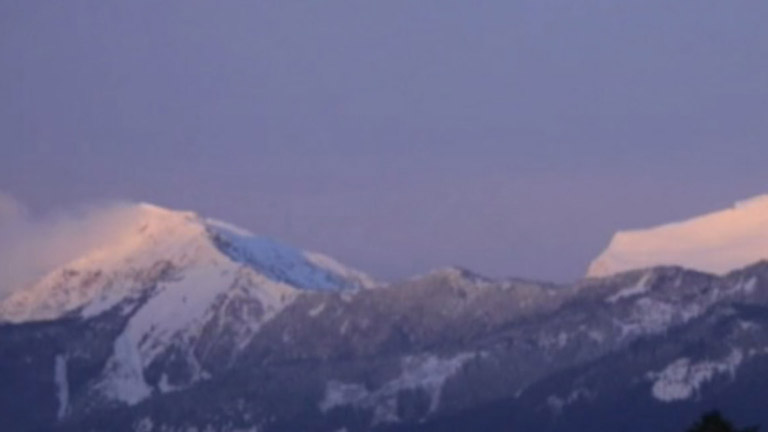The Development of Community Archaeology at Qithyil
The Development of Community Archaeology at Qithyil
View Transcript[John (Sonny) Williams Jr.]: To understand who we are, we have to first learn who we were. And to help teach these young people to get out of their to get a old frame of thinking done and over with, in the sense that why, why is it when it comes to aboriginal - anything aboriginal - whether you’re here or across the world, why is it archaeology, not history? Just because we never wrote things down. Our people didn’t have any kind of form of writing. Why is it not history? It’s our history. But it’s not. It’s classified as archaeology. And I think for our young people to learn, and for the general people to see that, This is who we are and how we did things, but at the same time, we’re still here. We haven’t been assimilated into a Western culture. Yes, I wear t-shirts and stuff like that. I no longer wear cedar bark capes and stuff like that. But that doesn’t change who I am on the inside.
[Vi Pennier]: It was scary at first. I didn’t understand what archaeology was. Kinda had an idea; but just, the unknown, I guess, is what makes you kinda nervous.
[Dave Schaepe]: The collaborative model of archaeology that I’m aware of, in Stó:lõ territory, really originated here with the work at Sq'éwlets. And has set a standard for the way archaeology has been conducted ever since, in a couple of ways. The collaborative model, and the protocols that have been put in place, to accompany the practice of archaeology.
[Michael Blake]: In 1992, it was my turn to do the field school for the Department of Anthropology at UBC, the Archaeology Field School, that this particular site at Sq'éwlets looked like it was the most promising, and most in need of work for a couple of reasons. So our relationship really began by telling community members what we had found, and those community members were of course the Chief and council. And, Gordon and Sonny reported back to Chief Clarence Pennier, who was in charge of the - who was their boss at the time, and let them know, they let him know that we had found this site and that we would be interested in following up on it and bringing a field school there.
That season, our very first field school, to continue with our work by finishing the excavations of the two mounds - that is, the testing of the two mounds, And to map the site. In order to do that, we decided to go back to the community, back to Sq'éwlets’ Chief and council and let them know that these large mounds were burial mounds; we’re pretty certain this was a cemetery. Of course, they already knew it was a cemetery, because their elders and ancestors had passed along the information that that very site was always to be avoided. And so they knew it was a cemetery, but they weren’t sure about the mounds so much. At least at that stage of our research.
[Betty Charlie]: We sorta didn’t want to do it because we knew it was a burial site. And then we saw all the students, like wanting to go over there. We didn’t want them getting hurt. I think the biggest thing was that they had to show respect.
[Michael Blake]: Over the course of our several weeks of work, They finally kind of adopted us, and realized that we were there to learn about the history of the place, and guided us in how to, how to think about the site. And through our connection with Clifford, we got to meet Clifford’s father Leonard Hall, and Leonard told us about how that site was always known as a cemetery site. And that as young children, he and his friends were told never to go on that site. And especially never go after dark.
[Dave Schaepe]: Mound one, the investigations of mound one in particular I think, were very important to this project, very important to the relationship. And the fact that the community requested work be carried out there, to show the world, to show the province, the government, and the world at large that these are indeed burial mounds; places where our ancestors were placed in the past - not just natural piles of earth. And so the means by which, and the method by which, excavations took place there, was very much under. Under the framework of community perspective, community approach, and application of protocol. Every piece of that process, every part of it, in conjunction with the archaeological methodology, was really done hand-in-hand with the community. And it otherwise would never have happened.
[Betty Charlie]: When they started going into mound one, we knew what was in there, kind of. So, when they started opening up and going into mound one and going through all those rock alignments, and they were getting closer to the centre. Everyday, we got more nervous.
[Vi Pennier]: And, after we were there for oh, a couple of weeks, maybe 3 weeks, and then you become curious; like, I wanna know more, I wanna know more. The more I wanted to learn, the more I shared with the kids. The children, that would come around. And, was just - interested. And liked being amongst the students, because they had such open minds. I was already becoming an elder; I didn’t realize it then but. I even kept a book with the students’ writings in the book. We had nicknames for them; they became family.
[Michael Blake]: We decided to test two of the large mounds and a couple of other locations on the site, to see what kinds of deposits, what kinds of stratigraphic layers we could see in our excavations. And so we did that; we proceeded to go ahead and do that testing. Right away, we found that the areas on the terrace where we tested had very deep cultural deposits, with layers and layers of occupation surfaces and artifacts and food debris, and all the kinds of things that we expect to see in all of the archaeological sites up and down the Fraser River.
[Vi Pennier]: Because we didn’t know a lot about our past, because of the residential school, our information stopped when we were young. And so this was kinda like feeding us a little more of our past. And giving us more for the future.
[Clarence Pennier]: Well you know it’s important that we work together for a common cause. And one of the things that I’ve learned through all of my life is that our Aboriginal title and our Aboriginal rights - our collective rights - that are practiced by individuals, but the individuals aren’t the ones that really make decisions about their rights. It’s gotta be collective. And how we look after the land, and how we look after the resources is collective decisions. You know, to make sure that we’re looking after things not only for ourselves, but looking after the things for our future generations. And that’s one of the things that we’ve been, that I’ve learned is that we have to think seven generations past, and look seven generations into the future. To make sure that our great great great great grandchildren are going to have some of the same benefits that we enjoy today. So you know, in terms of collaboration, it’s to try to make sure that that happens.
Download:
SD (52 MB) | HD (165 MB)



